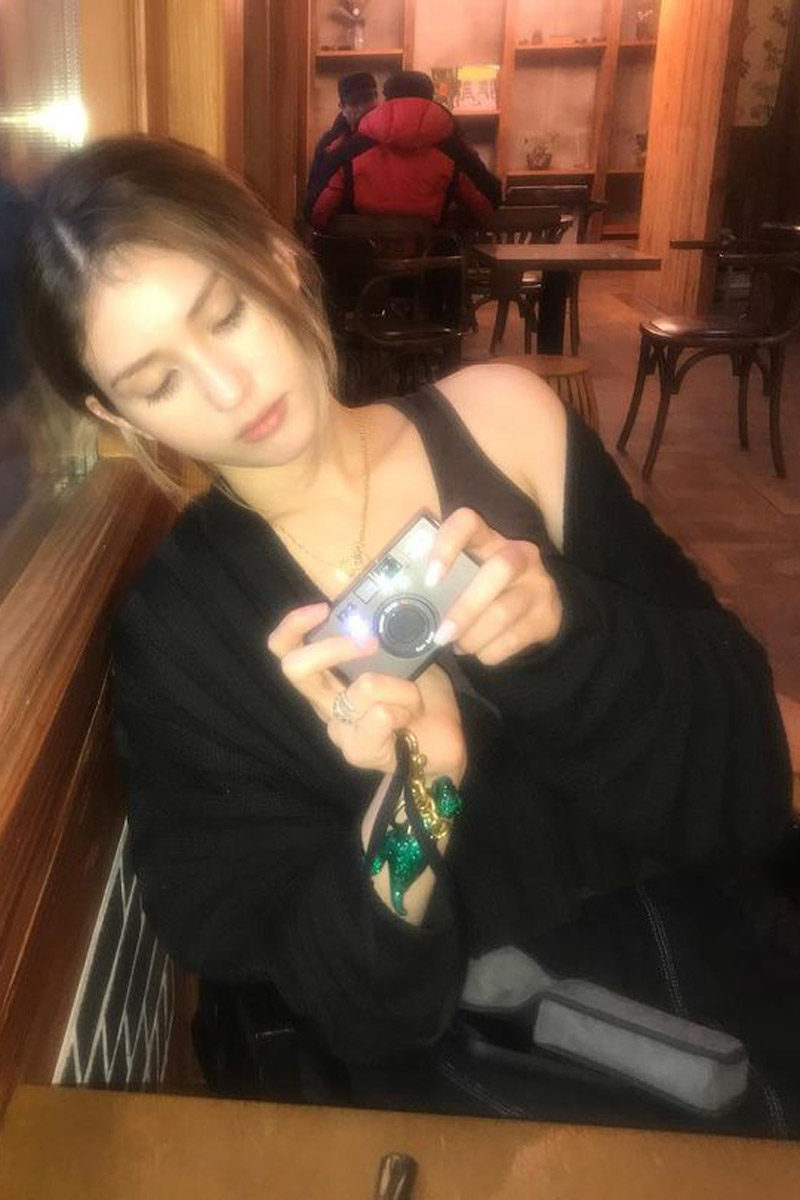Film cameras—in all their vintage glory—are making a resurgence. Over the past few years, we’ve spotted a burgeoning number of film-related accounts pop up across social media, undeniably led by some of our favourite personalities as well. Jennie of Blackpink and Gigi Hadid started accounts exclusively dedicated to their film archives; see @lesyeuxdenini and @gisposable for a glimpse into the B-sides of their life. Others like K-pop soloist Somi and Dua Lipa, however prefer using their own official accounts as a platform to showcase their film camera captures.
View this post on Instagram
Undoubtedly, the analogue photography space is one that is constantly associated with the ideas of nostalgia, memory and time. This comes as hardly a surprise: with only 36 photos on a usual 35mm film roll, each click of the button becomes all the more precious—as if we should really treasure that specific moment in time. Aptly summed up by Beverly, one of two running the popular @filmthrills_ account on Instagram: “Shooting film is thrilling to me because it really makes you practise catching the right moments at the right time,”.
First started in 2018, the account has since gained a loyal following by many local film enthusiasts and is known for their quick online sales of old film camera models—from point-and-shoot types to rangefinders—which they procure from varying sources. Film Thrills might be one of the readily accessible modes to look to should you be thinking of purchasing your first film camera, but there are also photo studios that specialise in conducting film photography workshops and portrait services. It is here where you’re taught to shoot, develop and print 35mm black and white film in the dark room—taking an individual through the entire analogue experience, from start to finish. “It is a very hands-on process and we want people to feel more connected to the images they produce,”shares Ryan Lee, the founder of Hip Xiong Photo Studio.
View this post on Instagram
Whilst some might have ventured into the space on their own, others might find the barriers to entry a tad intimidating. After all, purchasing a film camera runs the risk of technical stumbles, quality defects and a potential failure to capture the shots you might really desire. Whilst the latter is one that ultimately improves with practice and time, the former two can be managed with proper advice on choosing film cameras. Below, Vogue Singapore speaks to a couple of film photography experts—for advice on how to approach the purchase of your first film camera and other tips or tricks for the beginners in the crowd.

1 / 5
Set a budget
Know that this venture into the film photography space would require a sizeable part of your monthly expenditure. Film rolls can cost anywhere from $11 to $16 and developing the roll is about the same price range too.
Lee of Hip Xiong Photo Studio, advises to set a budget for yourself—when it comes to purchasing your first film camera. This will help to “narrow down your choices”. What’s important is that you “find something that you can see yourself using a lot.”

2 / 5
Narrow it down
There are a few different types of film cameras, and they’re suited for different purposes. But there are three main 35mm film camera categories: rangefinders, single lens reflex (SLR) and point-and-shoots. “Think about what you want to shoot and research on the appropriate focal length of the lens that will cater to the kind of photography you want to do,” advises Lee.
Point-and-shoot
This is undeniably one of the more popular camera types amidst beginners for its ease of use—considering its auto functions such as rewind, loading, self-timer and flash.
Single Lens Reflex (SLR)
The SLRs are mostly a manual type where the aperture, ISO and shutter speed can all be adjusted. It also allows you to precisely frame up the picture and observe depth through the lens.
Rangefinders
These manual cameras are similar to the SLR in terms of adjustable functionalities. Compared to an SLR, they focus only on the centre of an image but can be comparatively more portable and travel-friendly.

3 / 5
Know what's important to you
Everyone has a certain set of requirements that they would not want to give up for their first film camera. For example, do you need the zoom function, or do you see yourself playing around with the lighting more? Some others might even gravitate to the nostalgic feel of old photos with a date stamp in the corner of the final photograph. It’s the little things like these that make a world of difference in your own film photography experience.

4 / 5
Do a quality check
Most film cameras were made back in the ’80s or even earlier, so it’s plausible that some might have issues that cannot be fixed. “It’s always good to check whether the light seals are degraded, or if there is fungus in the lens. Battery corrosion is also another common issue,” advises Beverly.
Lee’s personal camera recommendation? The Nikon FM2, a 35mm SLR film camera.

5 / 5
Enjoy the process
A big draw to film photography is the excitement of going to the developing lab with your finished rolls, without really knowing what you’ve captured until the film has actually been developed. “You are limited to 36 shots, and there is no way of previewing your images. Chances are that you probably won’t be satisfied with the results of your first film roll but as you keep using your film camera, you will understand photography better and your shots will be more deliberate. Enjoy the process of learning through failure,” Lee advises.
Film can be messy, and far from perfect, but it’s important you embrace your mistakes and carve out your own style as you go along.





